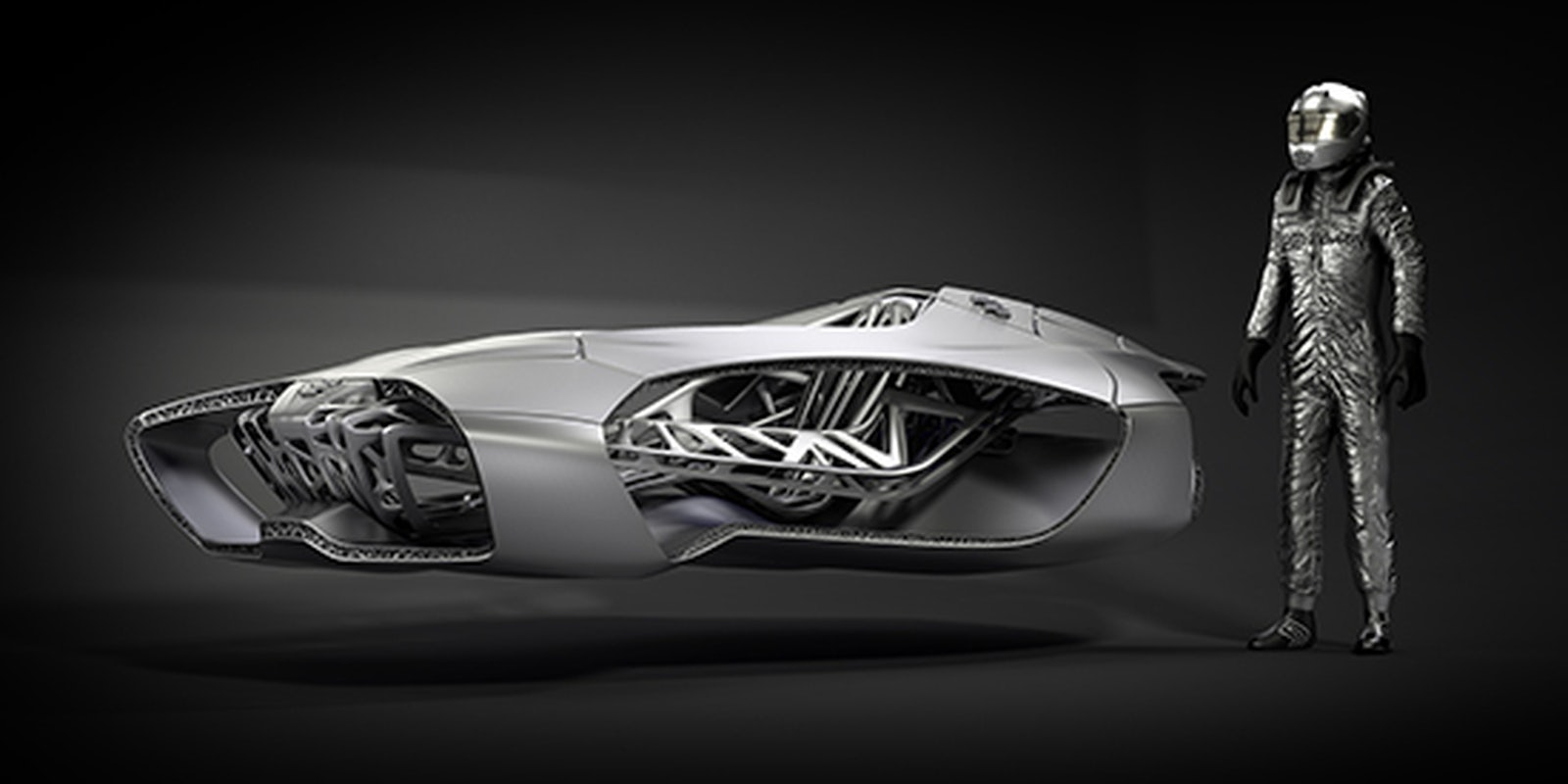Henry Ford is considered a visionary for dreaming up the automated assembly line. But not even the man behind the Model T could have imagined a day when cars might simply be printed.
That’s what a team of German engineers have done with the world’s first car frame made entirely out of large 3D printable parts. However, they’re still a long way off from replacing the traditional auto factory.
At the Geneva Motor show this week, manufacturing and design firm EDAG showed off the Genesis, the frame to a futuristic looking vehicle whose components were all made using 3D printing technology. It stands as a proof of concept demonstrating the ability to produce large machine parts via this burgeoning technology.
Though it’s far from being road ready, the prototype shown in Geneva promises a vehicle unlike any other. The sleek, turtle-shaped design looks like something out of a science fiction movie.
Wired reports this isn’t the first time 3D printing has been applied to cars, but it is the first time it’s been applied on such a large scale. Manufacturers have been able to create lots of smaller parts and piece them together, but the Genesis was made out of just a few large parts. This new way of printing car parts holds a lot of promise for future manufacturing–perhaps even the ability to print a finished car in one step.
The EDAG team tried several different types of printing, including selective laser sintering, selective laser melting and stereolithography. Ultimately they landed on fused-deposition modeling (FDM), a method that creates solid components from molten plastic or metal filaments. In this particular case, the engineers used carbon fiber to make the vehicle both lighter and stronger. They ultimately imagine the finished car being surrounded by a steel or aluminum frame to protect the interior.
“As for the target of using additive manufacturing to produce complete vehicle bodies, there is still a long way to go before this becomes an industrial application,” the design team said in its announcement.
“‘So for the time being, it remains a vision.”
Automobiles aren’t the only area where 3D printing engineers a breaking new ground. In the past year, a number of firms have made headlines as they raced to develop 3D printable firearms. Most of the designs, while functional, are not that durable. However, one Austin-based firm has succeeded in making a 3D gun out of metal that can hold its own against traditionally manufactured weapons.
Image via EDAG


